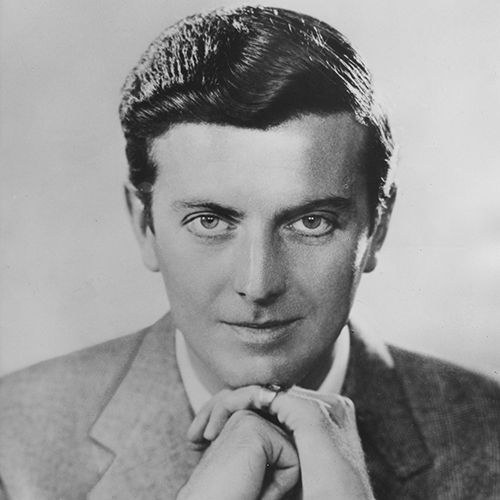In the realm of high fashion, the name Hubert de Givenchy stands as an icon, synonymous with elegance, sophistication, and timeless style. Born on February 20, 1927, in Beauvais, France, Givenchy’s journey from a young aristocrat to a legendary fashion designer is a tale of passion, innovation, and an unwavering commitment to beauty.
Early Years and Aristocratic Roots
Hubert James Taffin de Givenchy was born into an aristocratic family with roots deeply embedded in French history. Raised in the opulent surroundings of the Beauvais Château, Givenchy’s early exposure to art, culture, and refinement laid the foundation for his future in the world of aesthetics. His family’s lineage traced back to the 18th century, and this heritage infused in him a profound appreciation for craftsmanship and the finer things in life.
The Ascent in Fashion: From Apprenticeship to Stardom
Givenchy’s fascination with fashion blossomed during his formative years, leading him to pursue formal training at the École des Beaux-Arts in Paris. His journey into the world of haute couture took a decisive turn when he joined the prestigious Maison Piguet in 1945 as an apprentice. Under the guidance of designer Jacques Fath, Givenchy honed his skills and gained invaluable insights into the intricate artistry of fashion.
The turning point in Givenchy’s career came in 1952 when he founded his eponymous fashion house, “Givenchy.” The brand swiftly became synonymous with refinement and sophistication. His early designs, marked by a blend of simplicity and elegance, caught the attention of the fashion elite. Givenchy’s creations were characterized by clean lines, luxurious fabrics, and a keen attention to detail, setting the stage for his meteoric rise in the industry.
Audrey Hepburn: A Muse and Iconic Collaboration
One of the most enduring partnerships in the history of fashion blossomed between Hubert de Givenchy and the legendary actress Audrey Hepburn. The two first crossed paths in 1953, and a bond was forged that would forever change the landscape of fashion. Givenchy’s iconic association with Hepburn began with the black dress she wore in the movie “Sabrina” (1954) and reached its zenith with the iconic little black dress from “Breakfast at Tiffany’s” (1961).
Their collaboration extended beyond film sets, with Hepburn often choosing Givenchy’s designs for her personal life and public appearances. The designer’s creations for Hepburn embodied the epitome of timeless chic, and the duo’s friendship endured for over four decades, leaving an indelible mark on the world of fashion.
Innovations and Influence in Haute Couture
Givenchy’s innovative approach to haute couture earned him accolades and a devoted clientele. His designs were celebrated for their versatility, seamlessly blending traditional elegance with modern trends. The “Bettina blouse,” a revolutionary piece created in 1952, showcased his penchant for redefining women’s fashion. Givenchy’s contributions to the fashion industry extended beyond clothing; he introduced the concept of a luxury ready-to-wear line, making high-end fashion accessible to a broader audience.
The 1960s witnessed Givenchy’s exploration of geometric shapes and unconventional fabrics, further solidifying his reputation as a visionary in the fashion realm. His use of graphic prints and bold patterns challenged conventional norms, inspiring a new wave of creativity in the industry.
Global Expansion and Enduring Legacy
Givenchy’s influence transcended borders, and by the 1970s, his brand had expanded globally. The Maison Givenchy became synonymous with Parisian chic, attracting a diverse clientele ranging from Hollywood stars to royalty. The designer’s commitment to elegance, combined with his ability to adapt to changing tastes, ensured that the House of Givenchy remained at the forefront of haute couture.
In 1988, Givenchy sold his fashion house to the luxury conglomerate LVMH (Moët Hennessy Louis Vuitton), signaling a new chapter for the brand. Despite stepping down from the creative helm, Givenchy’s legacy continued to flourish under the guidance of subsequent creative directors.
Awards and Honors: Recognizing Excellence
Hubert de Givenchy’s contributions to the world of fashion garnered numerous accolades and honors throughout his illustrious career. In 1983, he received the Chevalier de la Légion d’Honneur, one of France’s highest civilian honors, in recognition of his outstanding achievements. The fashion world also celebrated his legacy with retrospective exhibitions, showcasing the evolution of Givenchy’s designs and their enduring impact.
The Enduring Allure of Givenchy: A Lasting Impact
Hubert de Givenchy’s influence on the world of fashion goes beyond the garments he created; it encompasses a philosophy of style and grace. His commitment to refining the art of dressing and his ability to capture the essence of timeless beauty continue to inspire designers and fashion enthusiasts alike.
Givenchy’s designs, characterized by their enduring elegance and simplicity, remain relevant in contemporary fashion. The House of Givenchy, under various creative directors, strives to honor and build upon the foundation laid by its visionary founder.
Hubert de Givenchy passed away on March 10, 2018, leaving behind a legacy that transcends trends and resonates with those who appreciate the transformative power of fashion. His impact on haute couture, coupled with his aristocratic charm, ensures that the name Givenchy will forever be synonymous with unparalleled style and sophistication.
